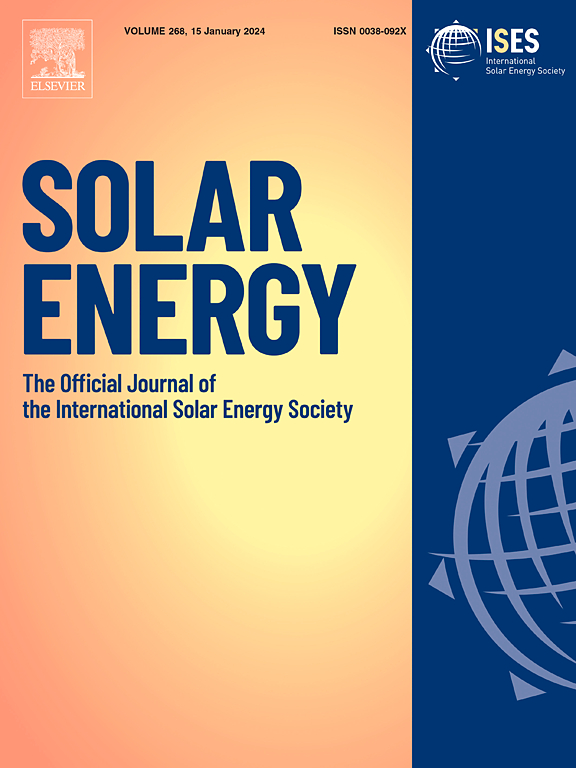Loop-wise control valves application in molten salt parabolic trough solar fields
IF 6
2区 工程技术
Q2 ENERGY & FUELS
引用次数: 0
Abstract
Parabolic trough power plants use collectors to concentrate direct sunlight onto an absorber tube containing a heat transfer fluid (HTF). The thermal energy is used to generate electricity in a steam cycle power plant. In almost all commercial power plant designs, the HTF is distributed homogeneously to all loops with a fixed opening for the manual loop inlet valves. This work presents an approach with individually controlled mass flow distribution to all loops. The objective is to achieve a more stable outlet temperature in the event of non-homogeneous irradiation. The control concept includes a controller for the total mass flow at the HTF pump, the focus rate of each collector and the opening of the individual loop inlet valves.
The suggested control concept is tested using the Virtual Solar Field (VSF) dynamic simulation tool for a 38-loop molten salt parabolic trough field. This simulation tool uses highly discretized irradiance data to reproduce realistic irradiance boundary conditions. A total data set of 940 days of operation recorded at CIEMAT’s Plataforma Solar de Almería are used. Furthermore, different artificial soiling scenarios are implemented to test the concept under non-homogenous heat input. The new control concept is compared with the state-of-the-art control schemes based on loop inlet valves with fixed opening. For normal soiling conditions, the simulation results show an average increase of 0.85 % in the net electrical energy produced.
回路式控制阀在熔盐抛物面槽太阳能场中的应用
抛物面槽式发电厂使用集热器将直射阳光集中到含有传热流体(HTF)的吸收管上。热能在蒸汽循环电厂中用于发电。在几乎所有的商业发电厂设计中,HTF均匀分布在所有回路中,手动回路入口阀有一个固定的开口。这项工作提出了一种单独控制质量流量分配到所有回路的方法。目的是在非均匀辐照情况下获得更稳定的出口温度。控制概念包括一个用于HTF泵总质量流量的控制器,每个收集器的聚焦率和单个回路进口阀的打开。利用虚拟太阳场(VSF)动态仿真工具对38环熔盐抛物槽场进行了测试。该模拟工具使用高度离散的辐照度数据来重现真实的辐照度边界条件。使用了CIEMAT的太阳能平台Almería记录的940天的总数据集。此外,采用不同的人工污染场景来测试非均匀热输入下的概念。将这种新的控制方法与目前最先进的基于固定开度回路进口阀的控制方法进行了比较。对于正常的污染条件,模拟结果显示净发电量平均增加0.85%。
本文章由计算机程序翻译,如有差异,请以英文原文为准。
求助全文
约1分钟内获得全文
求助全文
来源期刊

Solar Energy
工程技术-能源与燃料
CiteScore
13.90
自引率
9.00%
发文量
0
审稿时长
47 days
期刊介绍:
Solar Energy welcomes manuscripts presenting information not previously published in journals on any aspect of solar energy research, development, application, measurement or policy. The term "solar energy" in this context includes the indirect uses such as wind energy and biomass
 求助内容:
求助内容: 应助结果提醒方式:
应助结果提醒方式:


